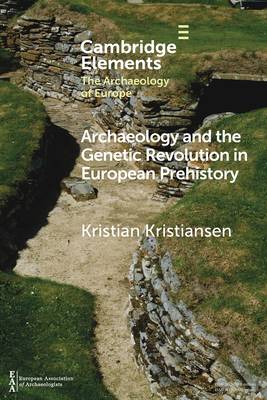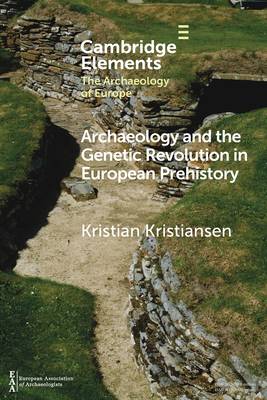
- Afhalen na 1 uur in een winkel met voorraad
- Gratis thuislevering in België vanaf € 30
- Ruim aanbod met 7 miljoen producten
- Afhalen na 1 uur in een winkel met voorraad
- Gratis thuislevering in België vanaf € 30
- Ruim aanbod met 7 miljoen producten
Zoeken
Archaeology and the Genetic Revolution in European Prehistory
Kristian Kristiansen
€ 22,95
+ 45 punten
Omschrijving
This Element was written to meet the theoretical and methodological challenge raised by the third science revolution and its implications for how to study and interpret European prehistory. The first section is therefore devoted to a historical and theoretical discussion of how to practice interdisciplinarity in this new age, and following from that, how to define some crucial, but undertheorized categories, such as culture, ethnicity and various forms of migration. The author thus integrates the new results from archaeogenetics into an archaeological frame of reference, to produce a new and theoretically informed historical narrative, one that also invites debate, but also one that identifies areas of uncertainty, where more research is needed.
Specificaties
Betrokkenen
- Auteur(s):
- Uitgeverij:
Inhoud
- Aantal bladzijden:
- 75
- Taal:
- Engels
- Reeks:
Eigenschappen
- Productcode (EAN):
- 9781009228688
- Verschijningsdatum:
- 8/09/2022
- Uitvoering:
- Paperback
- Formaat:
- Trade paperback (VS)
- Afmetingen:
- 152 mm x 229 mm
- Gewicht:
- 145 g

Alleen bij Standaard Boekhandel
+ 45 punten op je klantenkaart van Standaard Boekhandel
Beoordelingen
We publiceren alleen reviews die voldoen aan de voorwaarden voor reviews. Bekijk onze voorwaarden voor reviews.











